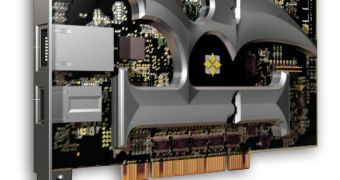Some time ago I discussed about the Killer NIC from Bigfoot Networks, and its ups and downs. I still believe the card has no practical use in a computer, no fun intended, because of its high price and little resource gain in offers. Somebody else had a similar idea, but they actually went out and put the affirmations of the manufacturers of Killer NIC to the test, to see who's right about what.
Not surprisingly, there is a lot of hardware technology being put to use in the manufacturing process of this card; it is a 10/100/1000Mbit/s PCI network card, it has a 400MHz Network Processing Unit (NPU) and 64MB of RAM. What proved interesting was that a network card had an USB port, which seemed odd, at best, but it had its purpose to be there. The card only uses around 5% of its processing power during normal load, that's what the tests revealed, and the rest of that processing power went to the card's, get this, internal Linux-based operating system.
When Bigfoot Networks introduced the Flexible Network Architecture (FNA) to the card and later on FNA Firewall, that meant you could have an independent "computer" inside you computer. That's were the USB port fits in, you can access the Linux OS from the card through it, and the FNA Firewall comes with the well-known iptables framework, allowing the user to set whatever firewall rules he or she wants. Now all of this does sound impressive, but when it came to the actual testing of the card in real online gaming situations, we saw how much of the alleged "bypass of the Windows Networking Stack" actually takes place and how much it affects the computer's performance.
The numbers said it all, the performance improvement was of 1-6FPS in games such as Battlefield 2142, World of Warcraft, F.E.A.R. and CS Source, while the ping improvement, another test that was run to see how packets are being affected by the network card, actually showed decreased ping performance from the Killer NIC, as opposed to the onboard solution. And let's just take a look around us; do you actually see any new motherboards that don't have some sort of network acceleration protocol, so that the computer's processor would be affected as little as possible by the network flow of information? I guess not. So, as a conclusion, the numbers will do the taking, $250 for 1-6FPS, you do the math.

 14 DAY TRIAL //
14 DAY TRIAL //